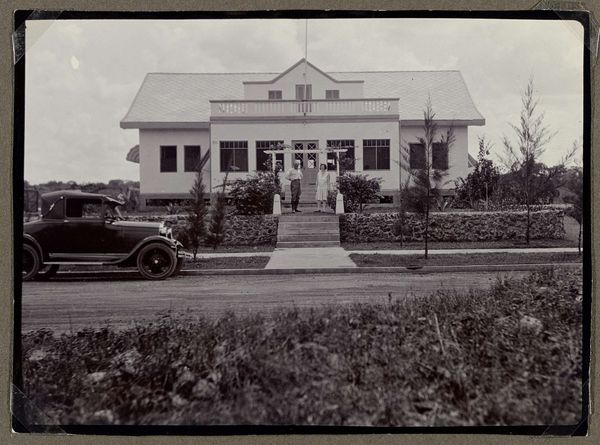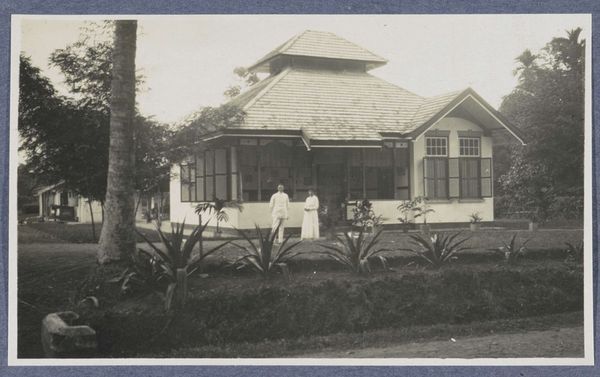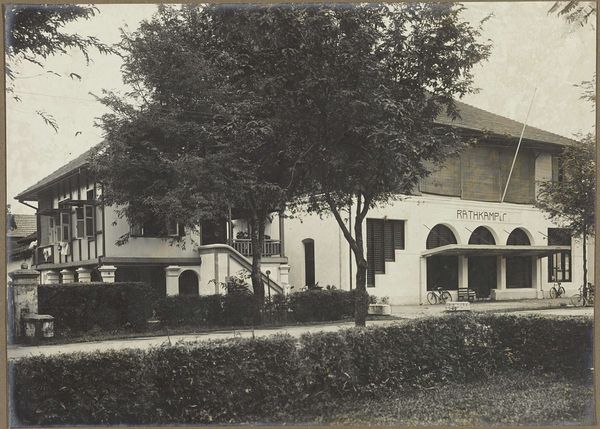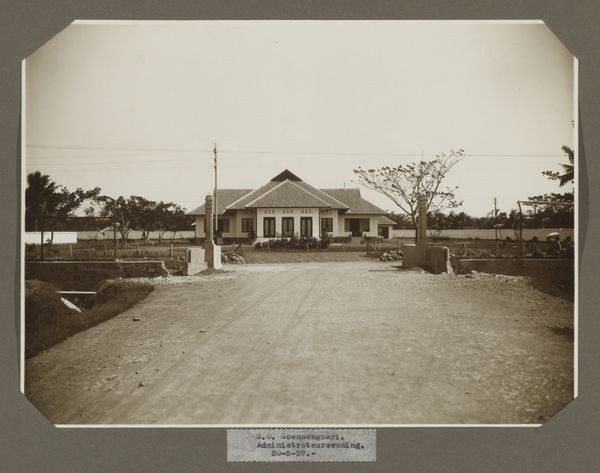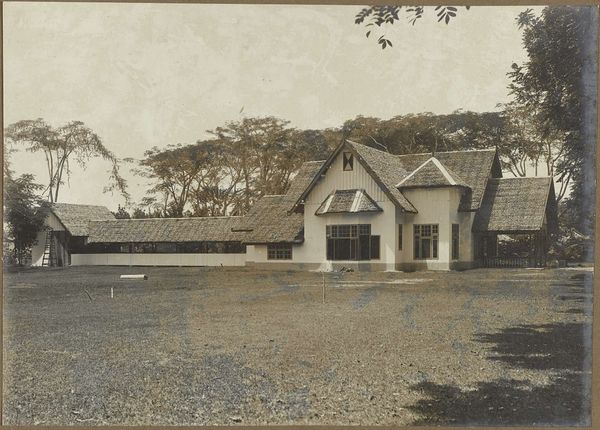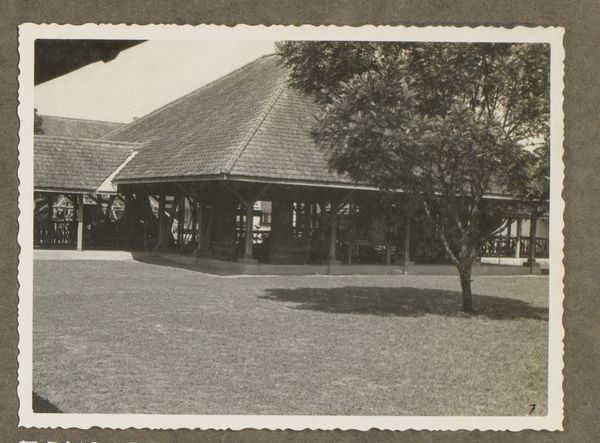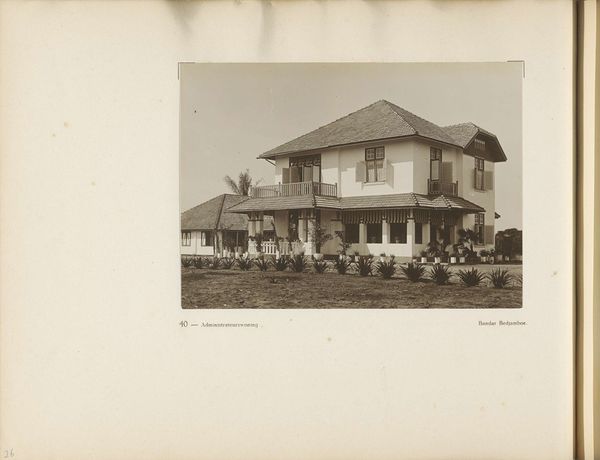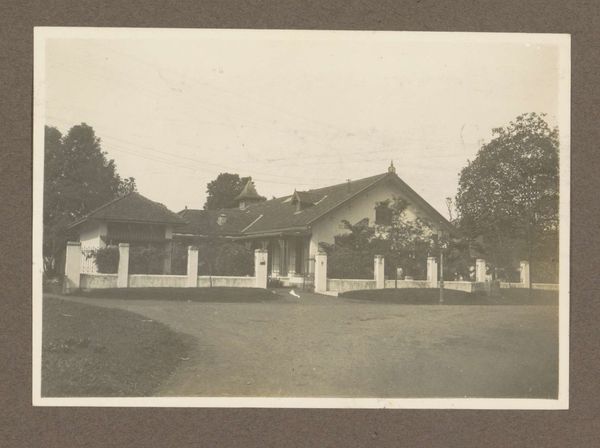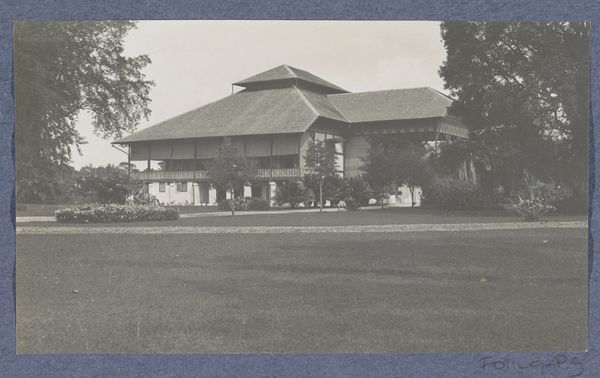
photography
#
portrait
#
sculpture
#
landscape
#
photography
#
cityscape
#
modernism
#
statue
Dimensions: height 91 mm, width 117 mm
Copyright: Rijks Museum: Open Domain
Curator: Looking at this vintage photograph, I'm struck by how effectively it captures a sense of both domesticity and the vast, unknown landscapes of the Dutch colony. What do you notice? Editor: Immediately, I sense a feeling of starkness, almost alienation, despite the presence of the house. It's the contrasting textures – the rough stonework, the smooth façade, the woman's slight figure that really stand out to me, what is her story here? Curator: This photograph is entitled "Edith Jetten voor het huis te Moengo," placing it in the period of 1925 to 1927. Editor: It reminds me a little of early modernist architectural photography. So, tell me more about the socio-political implications behind constructing such houses in Moengo, what was it all about? Curator: The photograph gives us an insight into the lives of Dutch individuals living in the then colony of Suriname. The modern house design and its presence in a tropical region evokes colonial aspirations, doesn't it? The geometric forms signify more than shelter, but are icons of Dutch governance and control. Editor: I agree completely; however, consider the composition: Edith herself seems almost spectral, diminutive even against this rigid background. Is she there to humanize the colonial presence, or does her image invite a deeper examination of women’s roles within colonialism's strict power dynamics? The image doesn't say it, but makes us want to ask it ourselves. Curator: Perhaps it speaks to both! Consider the deliberate act of photographing this scene; it underscores a narrative, embedding Edith, her house, and by extension, the Dutch colonial project into this specific landscape and our cultural memory. Editor: Yes, and what about the psychological effect of projecting a European ideal of “home” onto such a different place. Curator: Precisely! Through the window grids, or even the stone statues on the yard...these aren't arbitrary choices but rather symbolic reminders of heritage, identity, and ownership asserted within the colonial context. Editor: Looking at the social stratification and the building, what do you make of this photographic record as an example of early cultural Modernism? Curator: Modernism frequently sought to challenge existing structures, including societal ones, though even the best intentioned visions can still be vehicles for larger power structures. Now I find myself thinking about the visual legacy it has on today. Editor: It's remarkable how much depth a seemingly straightforward photograph can offer. I'll certainly leave today thinking more carefully about how visual histories shape colonial identities.
Comments
No comments
Be the first to comment and join the conversation on the ultimate creative platform.
